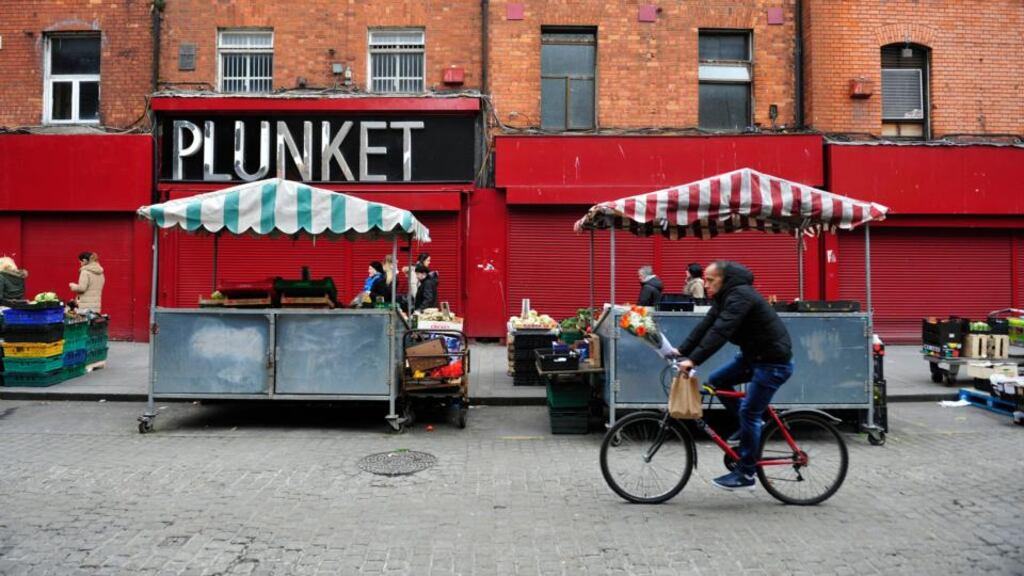The Moore Street markets were once part of a labyrinth of outdoor markets on the lanes around Little Denmark Street, Cole's Lane and Riddal's Row, which had operated in the north inner city for at least 200 years.
If none of these street names sound familiar, it’s because they no longer exist. The streets and their markets, including Taaffe’s Market, Anglesea Market and Norfolk Market, were cleared in the 1970s to make way for the construction of the Ilac Centre.
The shopping centre, at the time the largest purpose-built shopping complex in Ireland, opened in 1981 but the death warrant for the city’s street markets was signed more than a decade earlier. In 1968, Dublin Corporation’s inspectors condemned the markets as unhygienic and a danger to public health.
The following year, the council began buying out property owners under a compulsory purchase order and, by the mid-1970s, had amassed an eight-acre site from Henry Street to Parnell Street.
The corporation sold the site to the Irish Life Assurance Company on a 150-year lease for £3 million, annual ground rent of £70,000, a share in the shop rentals and a public library. The Ilac Centre scheme was to include development of a covered market on Moore Street, but this was dropped.
Winds of change
The Moore street market traders continued on much as they had for the previous 200 years, sandwiched between the Ilac centre to the west and the largely crumbling 19th-century buildings on the eastern side of the street. Then in the late 1990s the winds of change began to blow from the east. A consortium called the Carlton Group had amassed buildings including the former Carlton Cinema on Upper O'Connell Street, an adjoining site that has been derelict since 1979, as well as several other properties backing on to Moore Street.
Blight on the city
In 1999, permission was granted for a new shopping centre, Millennium Mall. However, two years later, with no development commenced, Dublin City Council moved in to compulsorily purchase the site, saying that not only was the failure to develop the site a blight on the capital’s main street but it “threatens to undermine the future of the historic street market on Moore Street”.
Several years of legal wrangling followed and it was not until 2007 that the Supreme Court confirmed the compulsory purchase order. The council had already agreed a resale deal with Chartered Land and, in 2008, the company applied for permission for the development. Again, the developers said the Moore Street markets would be protected and enhanced.
In 2010, five years ago this month, An Bord Pleanála granted permission for the shopping centre, but no development has started. Last year, the council proposed a land swap which would allow a number of Moore Street buildings owned by Chartered Land that are declared national monuments because of their association with the 1916 Rising, to be transferred into council ownership to allow the development of a commemorative centre. But this deal was vetoed by councillors.
Chartered Land still has two years left to act on its planning permission. The project is “on hold” the developers say but, due to the deteriorating condition of the street and falling trader numbers, the council has decided it must modernise the market without delay.












